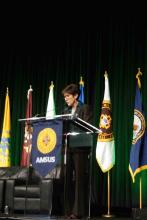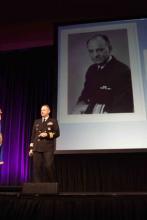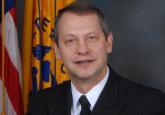Dr. Clancy Outlines VA Blueprint for Change
Carolyn M. Clancy, MD, Interim Under Secretary for Health at the VA outlined strategic aims for reshaping and restructuring into a more unified veteran-focused health care system. The ultimate goal for the plan is to put the veteran in control of his or her health care by providing a single phone number, a website, and well-trained VA employees who understand all the VA’s offerings. According to Dr. Clancy, “[this restructuring's] success will be defined from the veteran’s perspective."
All the coming changes at the VA will align with 10 strategies for sustained excellence, which focus on improving performance, promoting a positive culture of service, advancing health care innovation, and increasing operational effectiveness and accountability. The strategies include:- Operate a health care network that anticipates and meets the needs of veterans;
- Deliver high-quality, veteran-centered care that compares favorably to private sector health care;
- Leverage information technology, analytics, and models of delivery to optimize health care;
- Grow an organizational culture rooted in the VA’s core values and mission and prioritize veterans;
- Foster an environment of continuous learning, responsible risk taking, and personal accountability;
- Advance a model of health care that is personalized, proactive, and patient-driven;
- Lead the nation in research and treatment of military service-related conditions;
- Support innovation in health services through academic affiliations;
- Operate and communicate with integrity, transparency, and accountability; and
- Modernize VA management, including human resources, accounting, and other support services.
The PHS Commissioned Corps charted new territory with its recent deployment to Liberia to provide Ebola care, according to Acting Deputy Surgeon General RADM Scott F. Giberson. The Commissioned Corps faced enormous challenges on its mission to work globally for the first time, but it has been successful in setting up a functioning Ebola care unit, ensuring the health and safety of the Corps members and coordinating activities across multiple U.S. government and global organizations. So far, the unit has seen 13 patients, 11 of which have survived. Corps members continue to provide care in Liberia.
An Update on the Defense Health Agency
The Assistant Secretary of Defense for Health Affairs Jonathan Woodson, MD, outlined the strategic challenges and plans for changes at the $50 billion Defense Health Agency (DHA). “Get ready, this train is going to move very fast and you are part of it,” he challenged active service health care providers. "We understand this is a complicated world, and we need to get energized to find the solutions.”
According to Dr. Woodson, military medicine is moving toward prioritizing value over volume, modernizing management with an enterprise focus, defining its 21st century capabilities and manpower, and investing in and expanding its partnerships. Readiness remains at the center of military medicine, but Dr. Woodson emphasized that the DHA needs to develop a "culture of zero harm” and to engage patients as active participants in their care.Dr. Woodson also promised to develop better telehealth capabilities. “Telehealth is going to be an important tool, because it gives us the capability to reach forward and reach back,” he said, “We are a highly distributed system, and we need to develop it as a system, not just as a technology.”
PHS Officials Discuss 50-Year Battle Against Tobacco Use
At the opening session of the 2014 AMSUS Continuing Education Meeting, Acting Surgeon General RADM Boris D. Lushniak and a team of PHS leaders touted the progress made in the 50-year battle against tobacco use. Pulling few punches, RADM Lushniak insisted that “the tobacco epidemic was initiated and sustained by the aggressive strategies of the tobacco industry.” Although every day, 3,200 children in the U.S. smoke their first cigarette and 2,100 youth and young adults become regular smokers, there is reason for optimism, as the rate of smokers in the U.S. has dropped to 17%. “This is the number 1 cause of preventable death,” he said. “We won’t stop until the number is down to zero.”RADM Lushniak noted that the PHS became the first uniformed service to go tobacco-free while in uniform. Joining the Acting Surgeon General in the presentation was RADM David L. Ashley who discussed how the PHS eliminated tobacco use within its ranks. RADM Ashley outlined 10 guidelines for clinicians to support patients in battling a tobacco addiction.
CAPT Kimberly Elenberg also outlined the steps PHS is taking to help the other uniformed services in their efforts to reduce and eliminate tobacco use. According to CAPT Elenberg, it is essential to recognize the specific and unique deployment challenges that active service members face and the rationales behind tobacco use before being able to reduce its use.






